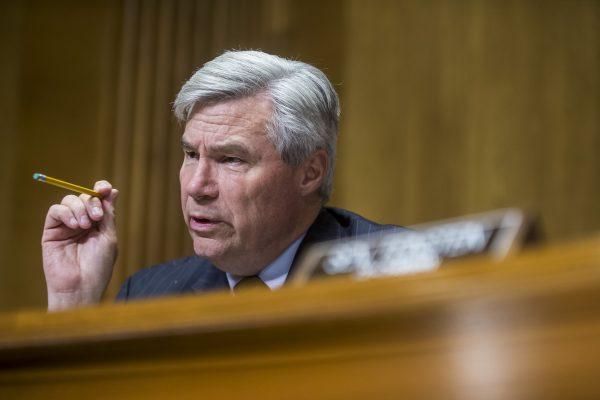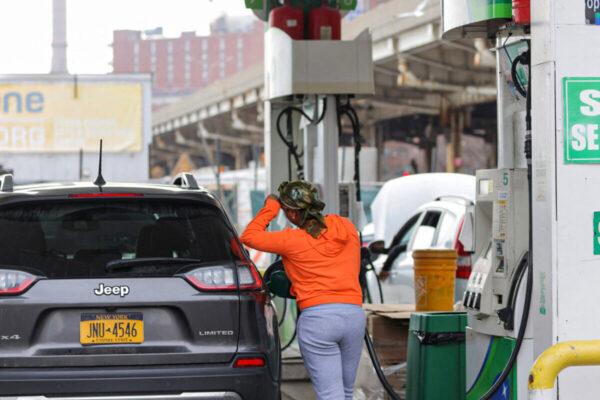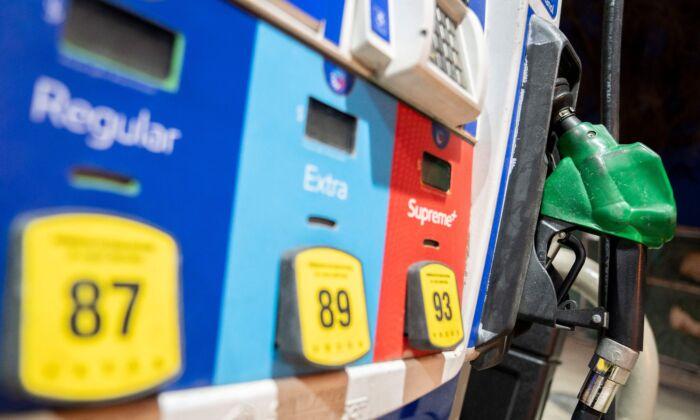Rep. Mike Thompson (D-Calif.), Rep. John Larson (D-Conn.), and Rep. Lauren Underwood (D-Ill.) submitted legislation to provide “energy rebates to individual taxpayers” in response to surging gas prices. The measure, called the Gas Rebate Act, includes an additional $100 for each dependent.
The structure for the rebates would be similar to the multiple payouts made since the beginning of the coronavirus pandemic, meaning that they would be phased out for individuals earning more than $80,000 a year or couples making more than $150,000 per year.
“The Putin Price Hike is putting strain on our economy, and I am proud to be working with Reps. Larson and Underwood to introduce this legislation to provide middle-class Americans with monthly payments to ease the financial burden of this global crisis.”

Other Democrats have considered additional measures to alleviate higher prices consumers are facing at gasoline stations across the country.
Sen. Sheldon Whitehouse (D-R.I.) and Rep. Ro Khanna (D-Calif.) suggested a quarterly rebate to consumers, with payments being supported by a tax applied on oil and gas companies.
If a barrel of oil costs $120, the tax will raise approximately $45 billion per year, they project. This would give single filers an annual rebate of $240 and joint filers $360.
“As Russia’s invasion of Ukraine sends gas prices soaring, fossil fuel companies are raking in record profits. These companies have made billions and used the profits to enrich their own shareholders while average Americans are hurting at the pump,” Khanna said in the statement.
Rep. Peter DeFazio (D-Ore.) put forward a third plan: a rebate based on profits from oil companies. He noted that the numbers aren’t precise because his Stop Gas Price Gouging Tax and Rebate Act would involve taxes on this year’s profits from energy companies.
At the state level, leaders are discussing proposals to offer relief from higher gas prices and broader inflation effects.
For and Against
Critics say that some of these ideas will add to inflationary pressures.The Committee for a Responsible Federal Budget (CRFB) last month came out against one specific policy: suspending the 18.3-cent federal gas tax for the rest of 2022, arguing that it would benefit producers and trigger higher prices in other sectors of the economy.
“By boosting demand in an already over-stimulated economy, the holiday would likely boost inflation in 2023 once it ends. The holiday will also undercut the administration’s efforts to address climate change,” CRFB President Maya MacGuineas said in a statement.
“The pain Americans are feeling at the gas pump—and with rising costs throughout the economy—should be taken seriously and addressed thoughtfully. While cutting the gas tax may have political appeal, it would move in exactly the wrong direction, worsening rather than improving our nation’s economic challenges.”

Some economists and financial experts have endorsed employing fiscal tools to help drivers.
But the chances of federal relief occurring have grown, especially in an election year, says Greg Valliere, chief U.S. policy strategist at AGF Investments.
“The global oil market reflects the volatility caused by the war in Ukraine grinding onward,” AAA spokesman Andrew Gross said in a report. “And with oil prices refusing to fall, the price at the pump is likewise meeting resistance at dropping further.”
A Yardeni Research note estimated this month that intensifying pressure at the pump would result in an extra $2,000 a year in gasoline spending for the typical U.S. household. That’s in addition to roughly $1,000 in additional costs at the supermarket.





